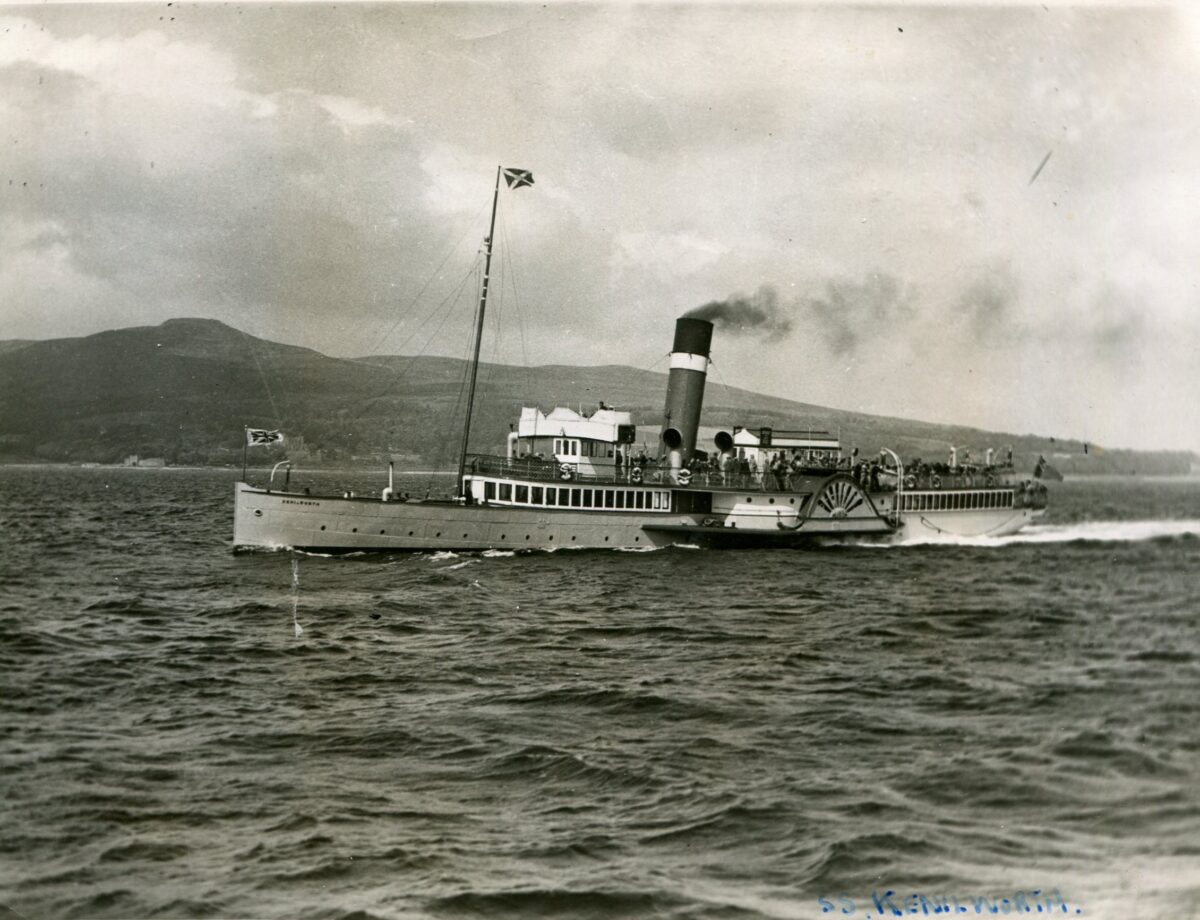
At her annual dry-docking in the run up to the 1936 season the Board of Trade started to make noises about the amount of work which would be needed to be done to the LNER’s Clyde paddle steamer Kenilworth in the not too distant future in order to keep renewing her passenger certificates. They were fine for 1936. The certificates were issued. But the owners would need to be aware that major works were needed in the offing if the ship was to have any longer term operating future.

The LNER had just had delivered the previous summer the diesel electric paddler Talisman. She had given them one season’s service and, so far anyway, her new owners were very pleased with her. So they went back to her builders A & J Inglis to ask for a quotation for another similar paddler as a replacement for Kenilworth. The price came back as £61K (about £4.5 million in today’s money) for one with English Electric engines like Talisman with delivery in nine months or with Harland and Wollf 8 cylinder 2 stroke diesel engines at £66K (about £4.8 million today) for delivery in 11 months.
This may have made the LNER gulp as Talisman had only cost them £49,783 (about £3.6 million today). However it was now seen as the going rate for a paddle steamer of that size. And A & J Inglis had noticed that the LMS were quite happily in the process of signing up to pay Fairfield of Govan £65K for one, or £127K (£9.2 million today) the pair, for their two new paddle steamers Juno and Jupiter to be ready in time for the 1937 season.
During the 1930s the LMS consolidated its rather dominant position on the Clyde routes controlling as it did some of the more useful piers on the south side of the Clyde. The LNER tried hard to counter this expanding their own routes to include Largs and in 1937 introduced a new colour scheme to try to make their ships stand out from their rivals. As seen in the picture of Kenilworth at the top this comprised light grey hulls and paddle boxes, white superstructure, saloons and deck shelters with stand out red highlights. The red funnels with white bands and black tops remained the same.
However a boost in trade did not materialise from all this and in the run up to the war the LNER subjected itself to a certain amount of retrenchment. Kenilworth was withdrawn after the 1937 season to be scrapped and was not replaced. Longer excursions down the Clyde were dropped after 1937 and for 1939 Waverley was withdrawn and laid up for the season.
But on 30th April 1936 there were still hopes that there might be further good news and that a brand new replacement for Kenilworth just might be ordered.
Kingswear Castle returned to service in 2023 after the first part of a major rebuild which is designed to set her up for the next 25 years running on the River Dart. The Paddle Steamer Kingswear Castle Trust is now fund raising for the second phase of the rebuild. You can read more about the rebuilds and how you can help if you can here.
John Megoran
This article was first published on 30th April 2021.


